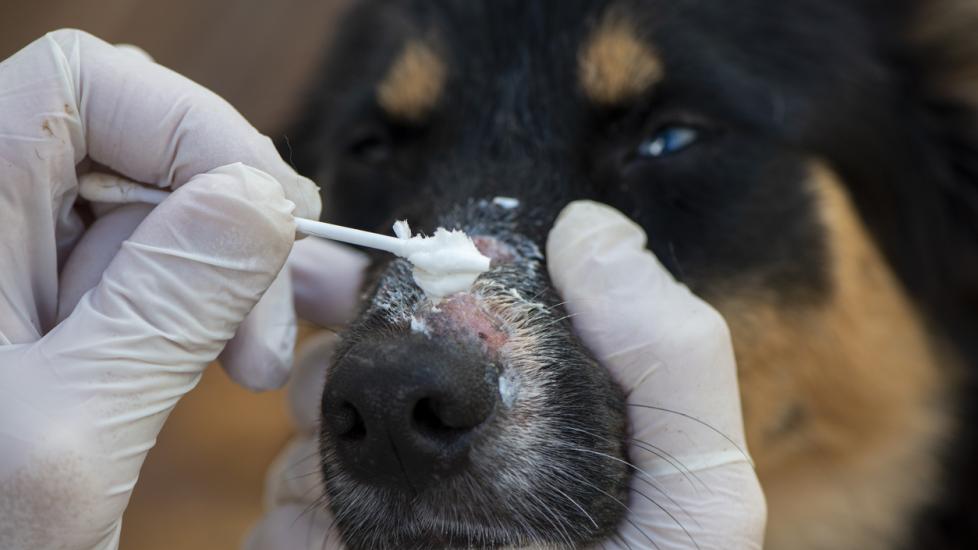Title: Understanding and Managing Ringworm in Canine Companions
Introduction:
When it comes to our beloved furry friends, one of the most common yet concerning skin conditions is ringworm. This fungal infection can be a real nuisance for both dogs and their owners, known for its characteristic circular lesions that can spread quickly if left untreated. It’s crucial to recognize the symptoms, understand how ringworm is transmitted, and take proactive steps to manage this highly contagious condition. In this article, we delve into the world of doggy dermatology, providing you with comprehensive insights on recognizing, treating, and preventing ringworm in your loyal canine companion.
What Is Dog Ringworm?
Dog ringworm (or dermatophytosis) refers to a group of fungi that invade the keratin layer of the skin, hair shafts, and claws, causing inflammation, scaling, and hair loss. The term “ringworm” stems from the circular pattern these infections often create as they grow outward from the initial site of infection. However, not all cases present with the classic ring-like appearance.
Symptoms:
The telltale signs of ringworm include:
1. Circular or irregularly shaped bald patches with redness, scaling, and crusting around the edges.
2. Thinning or breakage of hair within the affected area(s).
3. Itchiness or irritation leading to excessive scratching, biting, or licking at the infected sites.
4. Secondary bacterial infections due to self-trauma caused by intense scratching.
5. Transient lesions on other parts of the body where the pet has rubbed off the spores.
6. Scaly foot pads (interdigital hyperkeratosis), which may indicate ringworm affecting the paws specifically.
Transmission:
Ringworm is an infectious disease that spreads through direct contact with an infected animal or person. It can also be contracted indirectly via contaminated objects such as bedding, brushes, collars, leashes, and even human clothing. Dogs are particularly susceptible during warm, humid weather when the environment favors the growth of the fungus.
Diagnosis:
A definitive diagnosis typically involves a combination of methods:
1. Wood’s Lamp Examination: A special UV light can sometimes help detect ringworm spores, which fluoresce under certain wavelengths.
2. Fungal Culture: Collecting skin scrapings and submitting them to a laboratory for analysis provides conclusive evidence of the presence of fungal elements.
3. Microscopic Evaluation: Your veterinarian might examine skin samples under a microscope after applying a potassium hydroxide solution to dissolve cellular debris and reveal any fungal structures.
Treatment:
Once diagnosed, treatment usually consists of antifungal medications applied topically or administered systemically depending on the severity and extent of the infection. Common treatments include:
1. Topical Antifungals: Creams, shampoos, and dips containing miconazole, clotrimazole, or lime sulfur can effectively kill the fungus over time.
2. Oral Medications: If the case warrants systemic therapy, drugs like griseofulvin or newer generation azoles might be prescribed. These require close monitoring since they can interact with other medications and affect liver function.
3. Quarantine and Environmental Decontamination: To prevent further spread, isolate the infected dog and thoroughly clean the living space using disinfectants effective against fungi. Launder bedding and towels in hot water.
Prevention:
To keep ringworm at bay, implement these preventive measures:
1. Regular Grooming: Brush your dog regularly to remove loose hairs and dead skin, which can harbor fungal spores.
2. Good Hygiene: Bathe your dog as needed, especially after outdoor activities or exposure to potentially infected environments. Use mild detergents and antifungal shampoo when appropriate.
3. Vigilant Monitoring: Keep a regular eye out for any changes in your dog’s coat or behavior that could signal early stages of ringworm.
4. Veterinary Checkups: Schedule routine check-ups with your vet so minor issues can be addressed before they escalate.
5. Proper Socialization: Be cautious about allowing unfamiliar animals to come into close contact with your dog, especially those who appear ill or have a history of ringworm.
Conclusion:
Ringworm in dogs is a treatable condition that requires patience, diligence, and a multi-faceted approach. By understanding the causes, recognizing the symptoms, seeking prompt veterinary attention, and following through with proper treatment and prevention strategies, you can ensure that your four-legged friend stays healthy and happy—free from the bothersome grasp of ringworm.
